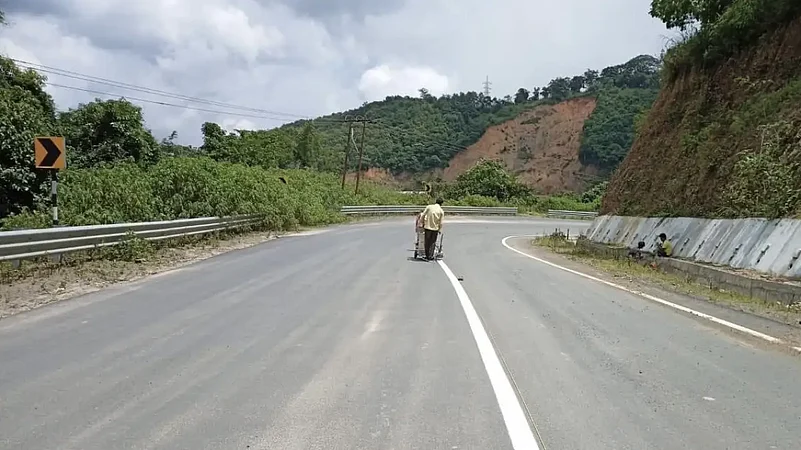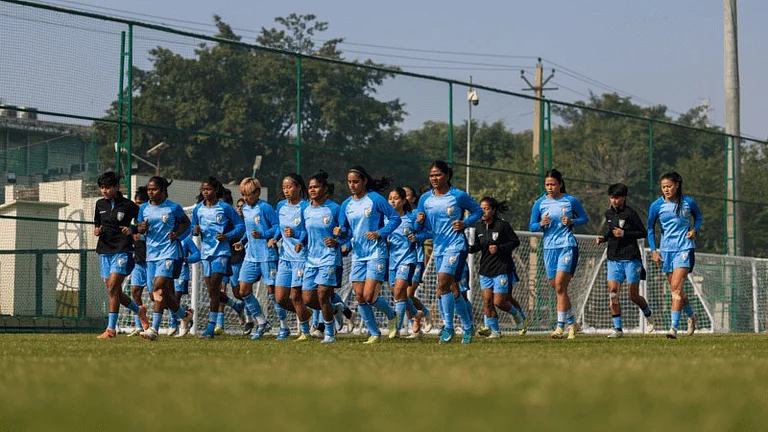June 30, 2022, will be remembered as a tragic day in the living memory of Manipur--a north-eastern state that falls in the high seismic Zone 5. On this fateful day, two back-to-back landslides at an interval of five-and-a-half hours, took the life of at least 61 people and left another 18 missing at a construction camp of Tupul Railway Station in Noney district. It was being constructed by cutting a slope of the hills that falls under the Young Himalayan mountain range. It was supposed to connect Manipur's capital Imphal with the national rail network by 2024.
Behind the colossal landslide, the Geological Survey of India, in its preliminary report, mentioned "extensive slope-cut (sic) for constructing a railway station, slope-cutting for long duration (from 2014 onwards)", besides other reasons like debris that limited the normal water flow of the Ijai river that flows parallel to the railway route in many places, unconsolidated materials dumped and used at the temporary construction site, and improper hillside drainage.
The Tupul railway station is part of the 111-km-long Jiribam-Tupul-Imphal route of Trans-Asian Railway Network. It will pass through Jiribam, Tamenglong, Noney, Kangpokpi and Imphal West district, where tribal communities of Manipur mostly live. It will connect Manipur with Moreh and Tamu in western Myanmar. Notably, the Tupul location was identified as susceptible by the Manipur National Landslide Susceptibility Mapping project.
Myanmar stands at a strategic point when India seeks to strengthen its economic and political corporation with the Association of South-East Asian Nations (ASEAN) in a post-cold war regional landscape.
It shares a 1,643-km-long border with India that separates four states of Northeast India from the Kachin states, Sagaing region and Chin state of Myanmar.
A strong relationship with Myanmar provides India multiple benefits like enhanced economic development in the Northeastern border, tackling Northeastern militants in sanctuaries of Myanmar and become a strong stakeholder of economic and regional cooperation.

The Trans Asian Railway Network is a crucial project for India’s Look East Policy in building connectivity through Manipur to Myanmar.
Following the incident in the construction side of Tupul Railway Station, Manipur CM Biren Singh, while stressing on the fragile soil of the young mountains, said the railway engineers “need to relook”.
The accident once again proved that railway projects like this one, positioned as a success story on inter-regional connectivity in Northeast India, call for more comprehensive study of Northeastern topography and its soil, to have solid resilience--both in terms of infrastructure as well as communities, in an ecologically vulnerable region.
Notably, since the beginning of the construction, Manipuri locals have been protesting the broad-gauge railway line, alleging violation of indigenous rights. In a memorandum to the Manipur CM in 2019, community representatives of 12 affected villages said the railway works were commenced even before taking their consent, and without receiving the forest clearance from the Ministry of Environment and Forest. It also alleged obstruction of water sources like Ningthourok and Yemunglok, which are natural water streams, and blocking of roads and tunnels. Notably, along with the destruction of water bodies, villagers who depend on agriculture, fishing and collecting snails, got severely affected. The memorandum further appealed to the chief minister to rehabilitate and compensate for their loss of land and sources of survival.
Another ambitious project–the Kaladan Multi-Modal Transit Transport Project (KMMTTP)–linking Aizwal with the Sittwe port in Myanmar, work of which began in 2010 is also facing similar allegations. Chhimmtuipi Lui or Kaladan is an important river in Mizoram that flows in a southeastern direction through the mountains of the Chin and Rakhine states of Myanmar. The 350 km river descends through the fertile plans of Arakan state, also known as Myanmar's rice bowl, before merging in the Bay of Bengal.
The Kaladan Project combines an inland waterway and highway project connecting Mizoram with a deep seaport on the Bay of Bengal in the Arakan state of western Myanmar. As part of the project, the construction of a 109-km-long road that connects Paletwa river terminal to Zorinpui on the Myanmar side of the Mizoram border in is also underway.
The proposed road goes through chin states of Myanmar parallel to the Kaladan river, an area which has been a central point of clash between the military junta and ethnic groups, especially since the coup in February 2021.
The Kaladan movement, a movement against the project across India and Myanmar, alleges that local communities of Mizoram and Myanmar affected by the project were neither consulted nor informed about it.
A report by the Kaladan movement, titled ‘One cannot step into the same river twice: making the Kaladan Project people-centred’, claims the negative impacts have already been felt by 1.2 million people living along the project route, including land confiscation, and forced relocation without adequate compensation in Mizoram, and labour discrimination and destruction of local cultural heritage in Arakan.
Salai Za Uk Ling, a human rights activist and deputy director of Chin Human Rights Organisation in Myanmar, says, “The benefits of this project should go to the least-advantaged communities. Unless and until the essential elements of full transparency, public consultation and participation, and accountability are met, the Kaladan Project should be suspended.”
India has refuted most of the allegations. However, it has admitted that no environmental impact assessment was done for the Kaladan Project, funded by India.
In Arunachal Pradesh, the eastern-most state of India, the Trans-Arunachal Highway Project is facing similar allegations--of bringing risks to local communities by triggering landslides through unscientific earth-cutting and soil dumping.
Talking to Outlook, Mirza Zulfiqur Rahman, independent researcher based in Guwahati, says, “The role and agency of stakeholders, particularly of the civil society of Northeast India, needs to be augmented in policy terms and decision-making capabilities in regional and sub-regional fora. This will enable the stakeholders from Northeast India to articulate more effectively the long-term interests of the region, instead of just being mere onlookers.”
The tussle between the communities and the development projects in Northeast India is worrisome. While New Delhi’s focus is improving relations with its South Asian and Southeast Asian neighbours, and to protect India's geopolitical interest through mega connectivity projects, it would not help in increasing social connectivity with Northeast India if local communities feel exploited and neglected. Community and civil society participation in development projects, and use of their traditional knowledge systems can make such projects more sustainable.
“The major policy-level gaps are always in mainstreaming various stakeholders in the consultation process, particularly civil society groups. Additionally, the approach towards fast-tracking of such large-scale projects in the name of connectivity alone, can have long-term repercussions on the ecology and environment of Northeast India, if not assessed cumulatively, by mitigating related concerns within proper scientifically sound parameters.” Rahman adds.


























